From the Thunderbolt family album: P-43 Lancer
About the P-43 "Lancer"
The history of the P-43 Lancer is closely linked to the development of one of the most famous icons of American aviation, the P-47 Thunderbolt. Just one look at the amazingly similar appearance of the two aircraft can prove this claim. It is interesting to note that the P-43 is only an intermediate step from the beginnings of the development, which started with the P-35 in the first half of the 1930s, to the technically perfected P-47, which was to take off for its maiden flight in May 1941.
Alexander Kartweli, an active and influential developer at Seversky Aircraft Production and, like company founder Alexander de Seversky himself, a Russian emigrant, played a leading role in all these designs.
His first major design, the P-35, had a powerful engine and superior flight characteristics , which earned Seversky victory over competitors Curtis and Northrop in a tender by USAAC in 1935, and a contract for series production.
With the AP-2 racing aircraft derived from this successful design, and especially with the AP-4 ("Advanced Pursuit 4"), which emerged from it a little later, a constructive design was found which was to remain characteristic for the following fighter aircraft of Seversky/Republic: the already remarkable performance of the engine could be increased even further with an ingeniously installed exhaust gas turbocharger. The previous low-wing aircraft was transformed into a mid-wing aircraft by the lines of the voluminous turbocharger, which were routed under the wing spar.
It was here, incidentally, that the "Razorback" design of the upper fuselage nose, typical of Republic, first appeared.
As early as May 1941 the USAAC ordered thirteen pre-series machines of what is now called the YP-43, which were delivered by September 1941. The outstanding speed of the P-43 also prompted the development of a version powered by the Pratt & Whitney R-2180 Twin Hornet or, alternatively, by the Pratt & Whitney R-2800, which, as the P-44 Rocket, was also ordered by USAAC in the order of 827 machines.
All these developments had taken place before the USA entered the war. The news from Europe, however, showed clearly even then that the performance of both the P-43 and the P-44 would not be sufficient.
This realisation had two consequences: on the one hand, all efforts were now being made to further develop and exploit the solid basic design, so that a superior fighter aircraft would emerge, measured against the conditions of actual live combat. This next step was to lead to the P-47 Thunderbolt a little later.
Another consequence was that USAAC orders were reduced and sales to friendly countries were approved. In the course of the "Land Lease" contracts, about 50 P-43 Lancers were brought to the theatre of war in China, where they were soon to gain high reputation. For example, it was the only construction in the Chinese arsenal that could intercept the high-flying fast Ki-46 "Dinah" reconnaissance aircraft of the Japanese.
Although one of the most powerful aircraft in the Chinese arsenal, the bulky and combative-looking Lancer proved to be extremely sensitive to enemy fire, and its sensitive fuel system was a constant source of concern.
The P-43 Lancer's combat mission was limited to China, with only Australia using a few aircraft as fast flying reconnaissance aircraft.
My model shows one of the pre-series aircraft which had been taken into service by the USAAC in early 1941 together with the series machines. The attractiveness of the design is increased here by the fact that the early Lancers still showed a natural metal surface.
To the kit
This example in a natural metal is one of four marking versions that can be realised from the new Dora Wings kit. The equipment delights and enables a speedy building pleasure. In this context I find the enclosed clear part masks especially exemplary. Although I was used to Eduard "Kabuki" material, I used the rather stiff looking masks with a little scepticism at the beginning, but after successful construction I can say: it works excellently!
The equipment includes a reasonably equipped scratched part circuit board and everything needed for a proper detailing of the cockpit. The fact that the radiator flaps also have to be made of this material, however, is not so good, which is my only negative criticism. The thin sheet metal simply could not be formed by me into an adequate rounding and was also not exactly "embellished" by the necessary assembly with CA adhesive. This, in turn, led to time-consuming reworking - which I would have liked to avoid by using simple, beautiful plastic components.
I doubt whether the term "short run" still makes sense for the description of the kit parts. Although there are no fitting pins and some sprues are really big, but the surfaces show wonderful recessed and raised details, appear to be cast sharply and convince by a pleasant fitting accuracy in the assembly.
The decals, although few in number, are potentially tricky to fit in some places and are a joy to behold in all categories. The thin carrier film nestles willingly to the contours and merges with the surface - that's how you like it!
All in all, this was a fine and problem-free project for me. Manufacturers such as Dora Wings are really to be thanked for the fact that anyone interested in such fascinating milestones in aviation can get to grips with them.

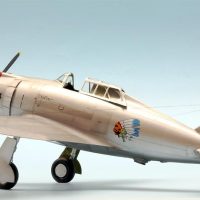
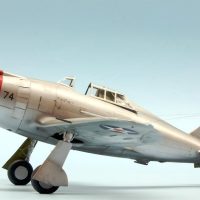


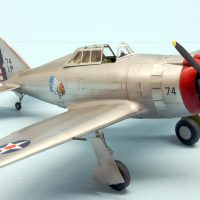
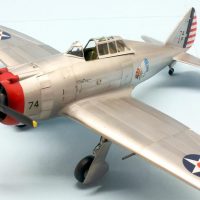
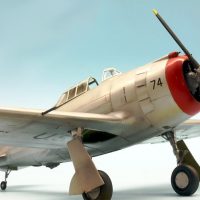
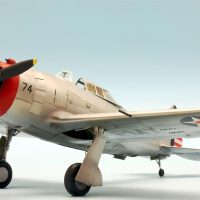
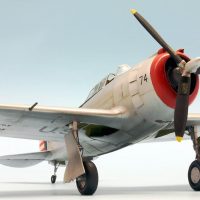

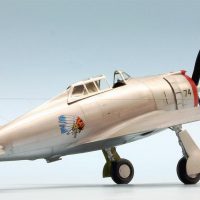

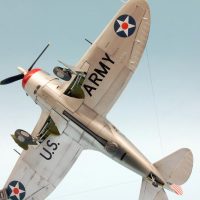
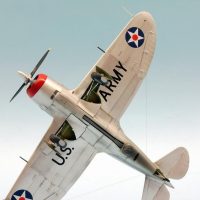



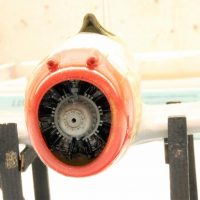
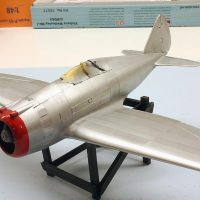
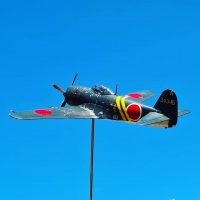
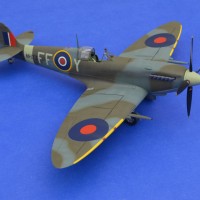
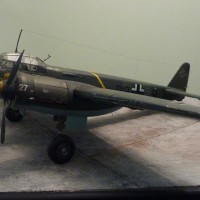

Great work and a beautiful model, Roland.
There are a couple tweaks needed in your development history. (I wrote a Datafile for Aeroplane Magazine earlier this year on the P-36 that got me finally informed on what was what) The competition between the Seversky and the Curtiss designs did not come down to better performance by the Seversky design, but rather to engine reliability problems on the part of Curtiss. In fact both had pretty mediocre engines, since at the time of the competition (1935-36) US aircraft engines were about on par with Italian aircraft engines. Seversky got a contract for 75 airplanes, then made the mistake of making a secret deal to sell the Japanese 200 of them in 1937, which got him in trouble with the War Department and resulted in his getting canned from his own company. In the aftermath, Curtiss - who had resolved their engine problems - got a contract for 220 P-36s in 1938, the biggest single order for a fighter by the USAAC since World War I.
The one thing Seversky had going for the design was its "wet" wing (also a feature of the P-43) which gave it the greatest range (1,000 miles) of any US fighter till the P-51 (and about 3x that of the P-47), however the wing also leaked in service, a problem the P-43 shared.
Based on its performance with the Chinese air force, the P-43 was far superior to what the "official story" was on it back in the US of A. It had really good altitude performance, which would have been very useful down in a place like New Guinea in 1942, where the P-40E and the P-39 both went to hell in a handbasket over 10,000 feet due to their lack of supercharging.
Anyway, great work on the model and your ability to produce a beautiful NMF finish really makes this "pop."
"Liked"
Hello, Tom,
Thank you very much for your kind words for the model and the NMF! To hear such from a capacity pleases me very much.
I read with great interest the information about Seversky and his Japanese connection! Thank you for the corrections and additions, which illustrate the entanglement of this design in the political and economic relations of the time.
I also thank you for the "liking"!
A very fine looking Lancer, Roland.
The dimensions (width) of the cockpit clearly show that the fuselage was extremely wide compared to most other airplanes at that time.
Your NMF does indeed look very natural, well done.
Liked as well.
Thank yo for your words!
Nice job, Roland. I enjoyed that kit too. Your NMF is outstanding. What paints did you use?
Thank you John! My choice have been metallic shades of Alcald
Thanks!
I really like the way you did the NMF.
Great work !
Thank you Haslam and Dale!
This is amazing work, Roland @rosachsenhofer. In fact, it's another one of your usual excellent jobs!
The NMF stands out, as also the great weathering, an effect so challenging to accomplish in an NMF plane.
The historical supporting text was excellently written and Tom's @tcinla additional comments most welcome!
Congratulations, my friend, on the excellent model and the equally excellent presentation!
That's a real beauty! I am eager to add a 1/72 version to my collection, but they are hard to come by at a good price, though I keep my eyes open!
Greg - I believe Dora Wings is currently working on a 1/72 Lancer as I saw some renders on the Kitmaker site not long ago.
Looks really great Roland. I think I will do the rNMF scheme when I start mine as yours looks terrific.
I have long admired that stand you use when constructing your models. Did you make it yourself? I would like to see a photo of it by itself if you don't mind me copying the idea.
Thank you very much for your kind words! I know it has taken some time, but I had to restore them a little bit before making some pictures for you. Here they are- feel free to "copy" and have fun!
They are also fun for me, their appearance plays with real wooden constructions without really wanting to reproduce something exemplary. They should simply bring a little mood into the construction photos. And yes, they are really practical! 🙂
4 attached images. Click to enlarge.
Fantastic work on the ancestor to the P-47 and other Thud craft.
I do like the bird and the rendition you reached. Bravo!
I love exploring the evolution of famous designs. This is a wonderfully informative article, and your work is top notch, congrats!
Thank you very much for your interest and words! Quite motivating this is!